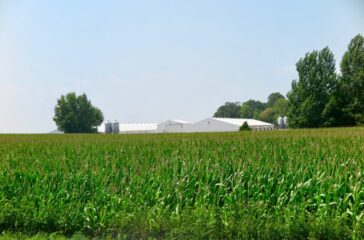Advising farmers on fertilizer, universities add to water pollution woes
By Keith Schneider
WINONA, Minn. – Corn drapes every curve and rise here in Winona County, Minnesota – seemingly endless fields of grain that contribute to the food, fuel and finances of a robust US agricultural economy.
But the bucolic landscape belies a dark and dangerous truth: Much of the groundwater in the porous limestone beneath this area of southeast Minnesota is contaminated with some of the nation’s highest levels of nitrates – harmful pollutants released into the environment by the use of nitrogen chemicals and livestock manure as fertilizer on farmland.
Close to 200 wells in the county have been contaminated with nitrates at levels higher than what is considered safe, according to state officials and in parts of Winona County, half of all households have nitrate-contaminated drinking water. It’s frightening data for area residents because nitrates are linked to a range of health problems, including heart and lung problems and certain cancers. Nitrates are known to be particularly dangerous for babies.
Crop and livestock production accounts for roughly 70% of the state’s nitrate pollution, according to the Minnesota Pollution Control Agency, a fact that recently led a coalition of 11 state and national environmental groups to petition federal regulators to investigate.
The groups are calling on the Environmental Protection Agency (EPA) to protect residents of Winona and seven other southeast Minnesota counties from “imminent and substantial endangerment” caused by nitrate contamination. The agency’s regional office has begun to interview state officials.
The issue is not unique to Minnesota. State and federal data show that since 1990, nitrogen spread on fields in ten major US corn-growing states has increased 26%, with more nitrogen than ever pouring off the land and into US waters.
 EWG
EWG